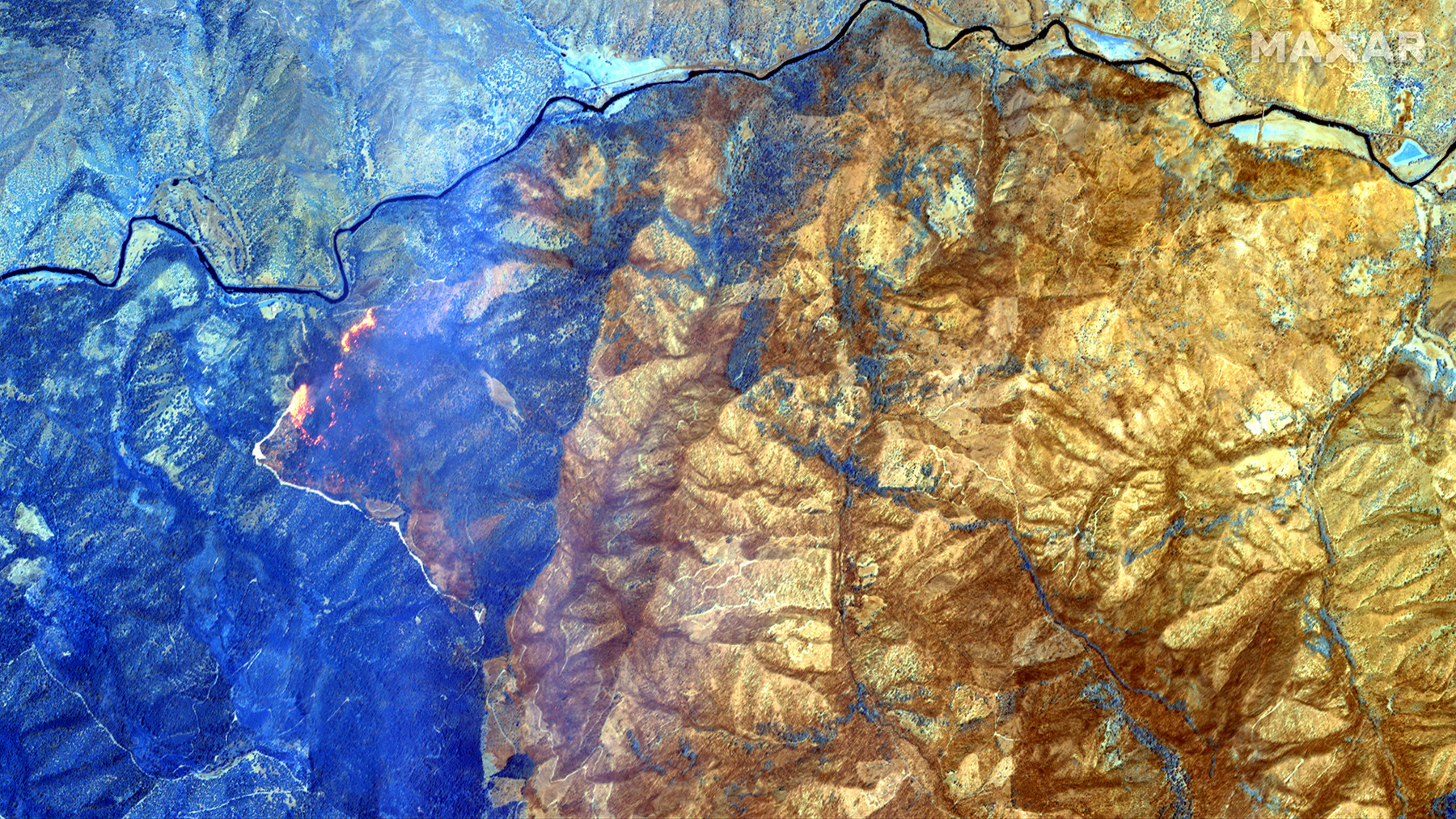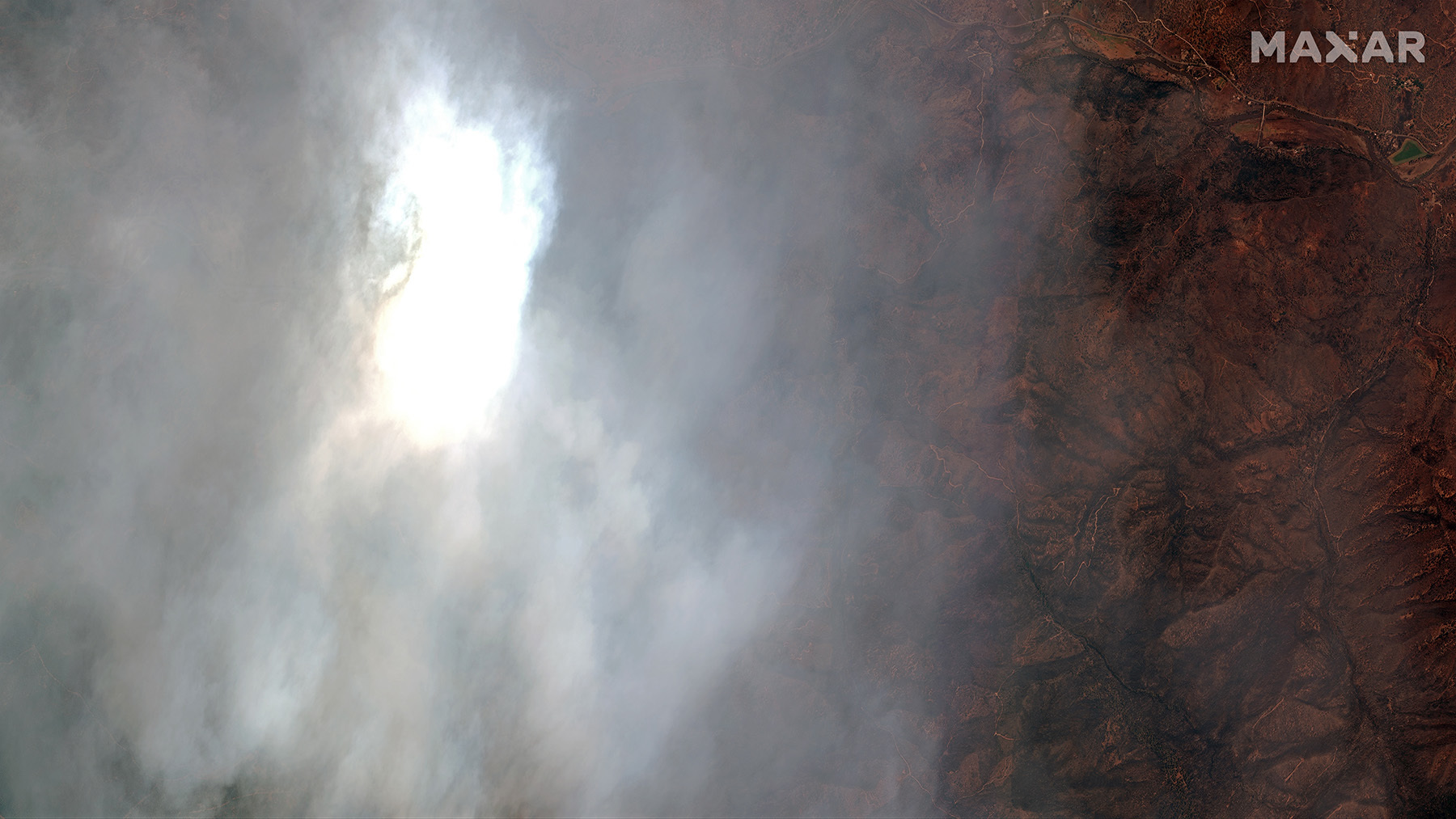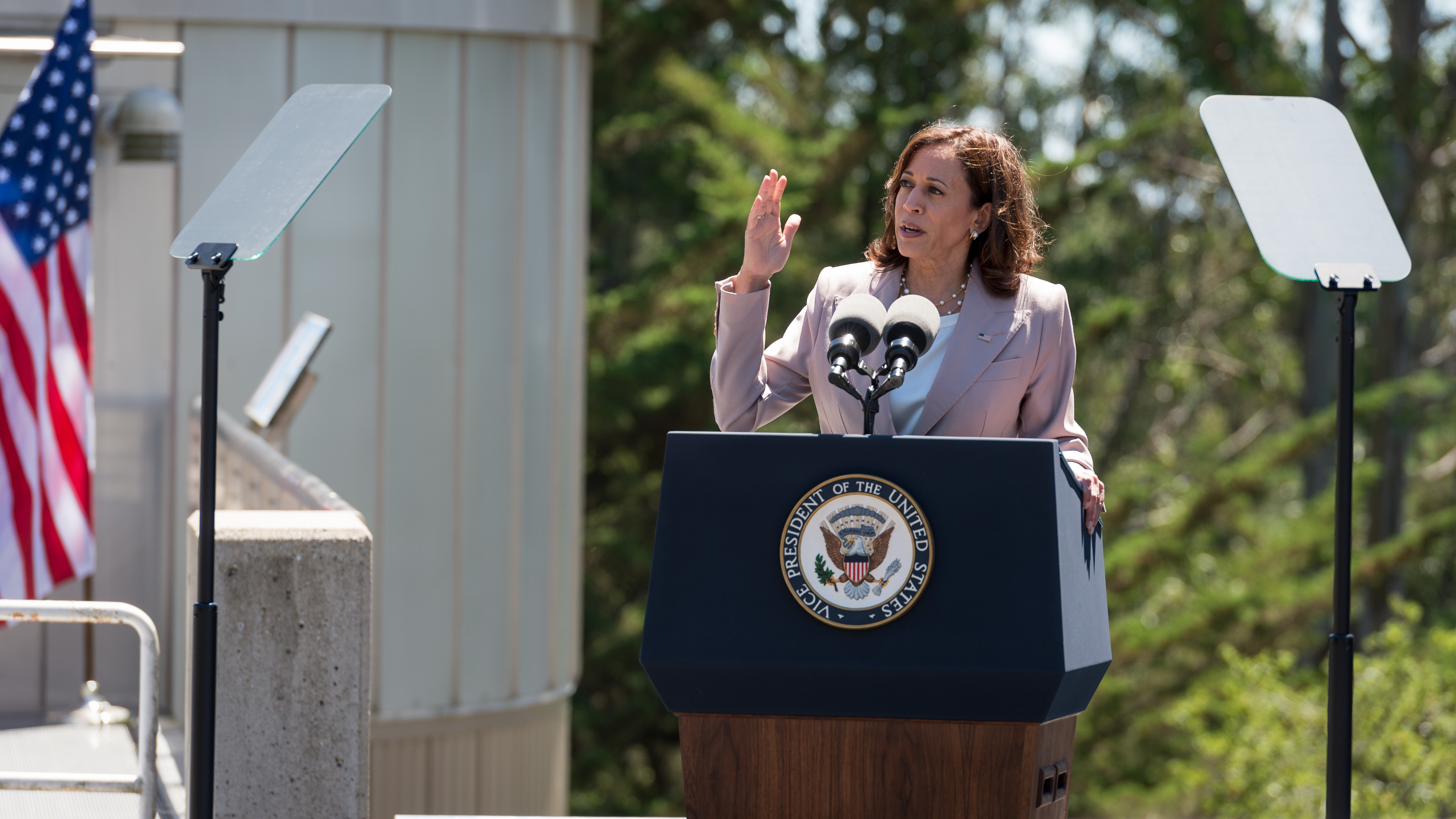
Photo Credit: NASA
It’s not often in a career you have the opportunity to brief someone as influential as U.S. Vice President Kamala Harris. On August 12, I had the honor to meet Vice President Harris as part of a National Space Council meeting at the Chabot Space & Science Center in Oakland, California.
I was the first of nine representatives from U.S. space companies to present to Vice President Harris. It was a privilege to share how Maxar augments public remote sensing systems such as NASA’s Landsat with commercial systems that lead the industry in spatial and spectral resolution to help customers see, understand and navigate our planet.
The National Space Council within the Executive Office of the President is charged with providing objective advice to the President on the formulation and implementation of space policy and strategy. Other high-profile attendees included California Governor Gavin Newsom, Oakland Mayor Libby Schaaf, Federal Communications Commission Chair Jessica Rosenworcel, Federal Aviation Administration Acting Administrator Billy Nolen, and Office of Space Commerce Director Richard DalBello.

I had the chance to meet Dr. Sian Proctor, the first Black woman to pilot a spacecraft, at the August 12, 2022, National Space Council event, featuring remarks by U.S. Vice President Kamala Harris.
Informing disaster response and providing global transparency
Maxar has a strong history of providing commercial satellite imagery to the U.S. government through our longstanding partnerships with the National Reconnaissance Office and the National Geospatial-Intelligence Agency, but I began my briefing with images that hit close to home for many Californians in attendance.
Maxar imagery plays a critical role in keeping communities and first responders safe during natural disasters. The below example leverages the shortwave infrared (SWIR) sensor on Maxar’s WorldView-3 satellite to determine the boundaries of the recent McKinney wildfire in Northern California. SWIR imagery allows us to “see through” smoke to reveal actively burning fires and hot spots.
Maxar’s WorldView-3 satellite collected these images of the McKinney wildfire in Klamath National Forest on August 6, 2022. The natural color image, which shows what the area looks like to the human eye, is on the left. The image on the right uses SWIR light bands, which reveal actively burning fires and hot spots in orange/yellow, burned areas in shades of brown, and unburned vegetation in shades of blue.
I also shared how Maxar's high-resolution, unclassified imagery has allowed many customers—including the U.S. government and international allies—to maintain an accurate, up-to-date view of conditions on the ground in Ukraine.

This Maxar WorldView-3 image collected March 19, 2022, shows the Mariupol theater housing Ukrainian civilians after it was bombed, despite the Russian word “children” being painted on the ground outside the theater before the attack.

Since May 2022, Maxar imagery has documented what appears to be Russia stealing grain from Ukraine, which is widely known as “the breadbasket of Europe.” This GeoEye-1 overview image of ships in the Black Sea was collected July 7, 2022. Click right for a closer look at vessel activity.
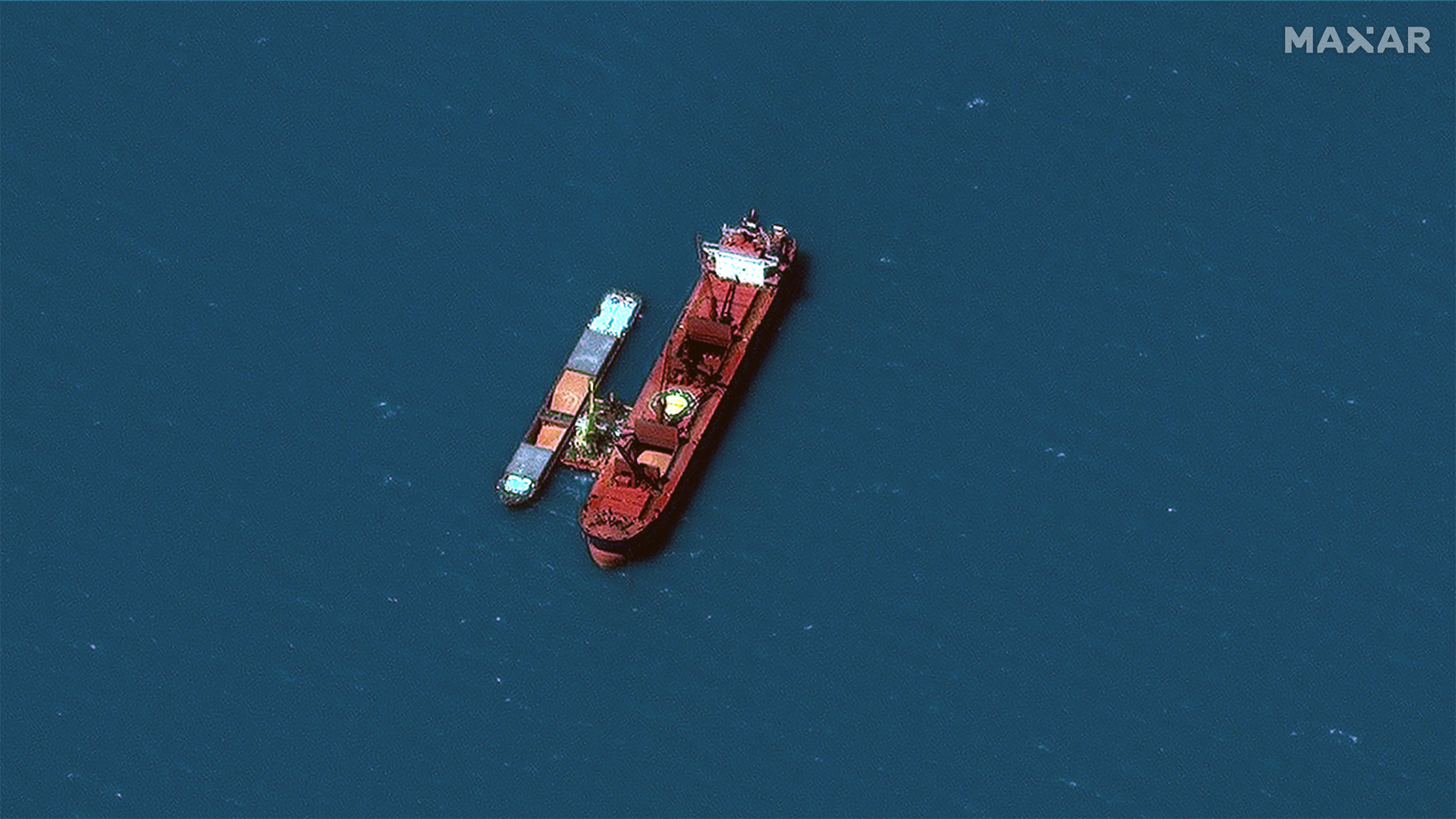
In this zoomed-in view of the previous GeoEye-1 image, a Russian cargo ship (on the left) transfers Ukrainian grain to a bulk carrier (on the right) in the Black Sea. Maxar's Crow's Nest Maritime Monitoring and Security product provided insights that the cargo ship’s automatic identification system signal was turned off, which is often an indication of illicit activity.
Through our News Bureau initiative, Maxar has made imagery and analysis from Ukraine available to news organizations to support global transparency and combat the spread of disinformation.
Maxar imagery will be instrumental in helping organizations such as the U.S. State Department-funded Conflict Observatory program capture, analyze and expose evidence of war crimes in Ukraine.
As the war persists, Maxar will continue to monitor the situation from other perspectives, including the potential implications for global food security.
Fostering diverse commercial space talent
In addition to meeting Vice President Harris, I was also humbled to meet several Brooke Owens and Patti Grace Smith Fellows at the National Space Council event.
The Brooke Owens Fellowship recognizes exceptional undergraduate women and other gender minorities with space and aviation internships, senior mentorship and a lifelong professional network. An “official spin-off" of the Brooke Owens Fellowship, the Patti Grace Smith Fellowship provides extraordinary Black students with their first work experience in the aerospace industry, personalized mentorship and a cohort of similarly driven and talented young Black people pursuing aerospace careers.
As a first-generation college graduate myself, I am passionate about helping Black and Latino youth pursue careers at the intersection of science, technology, engineering and math as well as entrepreneurship. I’m proud of Maxar’s engagement with these organizations, including welcoming Fellows from both programs as Maxar interns.
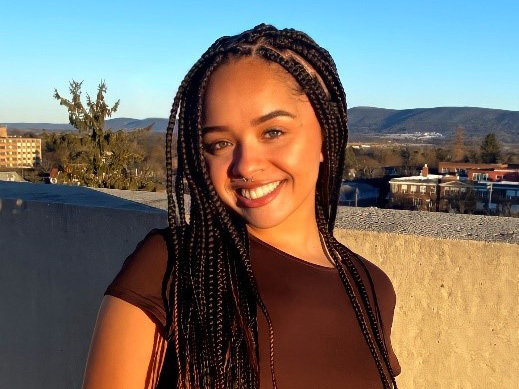
Mya G., a 2022 Brook Owens Fellow and junior at The Pennsylvania State University studying aerospace engineering, returned to Maxar for a second summer. Mya was also a 2021 Patti Grace Smith Fellow.

2022 Patti Grace Smith Fellow Bille D. studies aerospace engineering at the University of Notre Dame. His desire to be in an environment that aligned with his personal beliefs and matched his ambition led him to Maxar.

De’Ashley S. is a 2022 Patti Grace Smith Fellow and mechanical engineering student at Old Dominion University. She hopes her Maxar internship will serve as a path to facilitate her career development through actively engaging with experienced professionals.
Maxar is committed to acting as a catalyst for change through our support and involvement in the Brooke Owens Fellowship and Patti Grace Smith Fellowship. Meet our 2022 intern Fellows. We thank them for their hard work this summer and wish them luck with the upcoming academic year.
After meeting with members of the commercial space industry, Vice President Harris was formally introduced to the audience by Sala Ba, a 2022 Patti Grace Smith Fellow, undergraduate mechanical engineering student at Stanford University and intern at Blue Origin’s Environmental Test Lab. Sala recalled how her interest in space was piqued when she saw the Discovery Space Shuttle land at Dulles airport in 2012, and she rightly marveled at how much commercial space has changed in the decade since.
Commitment to growing a more innovative and diverse U.S. space sector
In her prepared remarks, Vice President Harris recognized that the exploration of space was defined in the 20th century but said the opportunity of space must guide our work in the 21st century.
“To seize that opportunity, our government must deepen and strengthen our partnership with the private sector,” said Vice President Harris. “Today, at laboratories, on launchpads, and in orbit—often, in partnership with our government—commercial space companies are making real the opportunity of space for millions of Americans. Their work is accelerating innovation in the space sector and shaping our nation’s future in space.”
I’m very optimistic about the future of the commercial space industry and look forward to working with the National Space Council to ensure the U.S. extends its lead in this sector and develops the diverse talent pool necessary to drive ongoing innovation.
